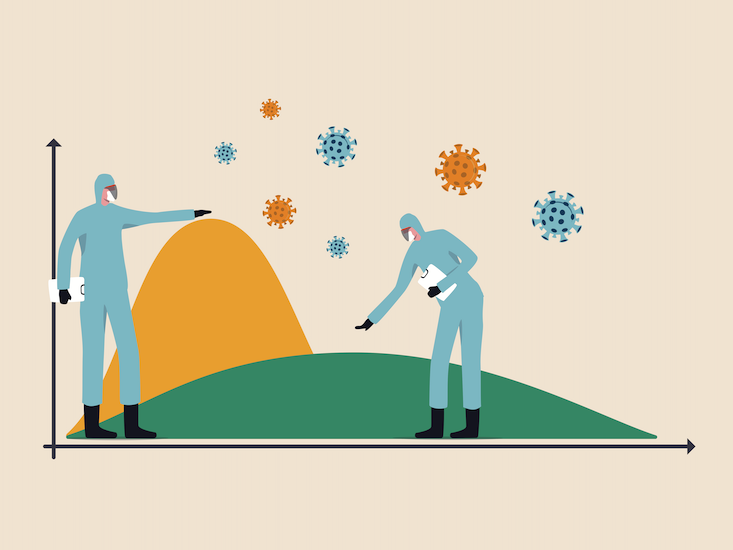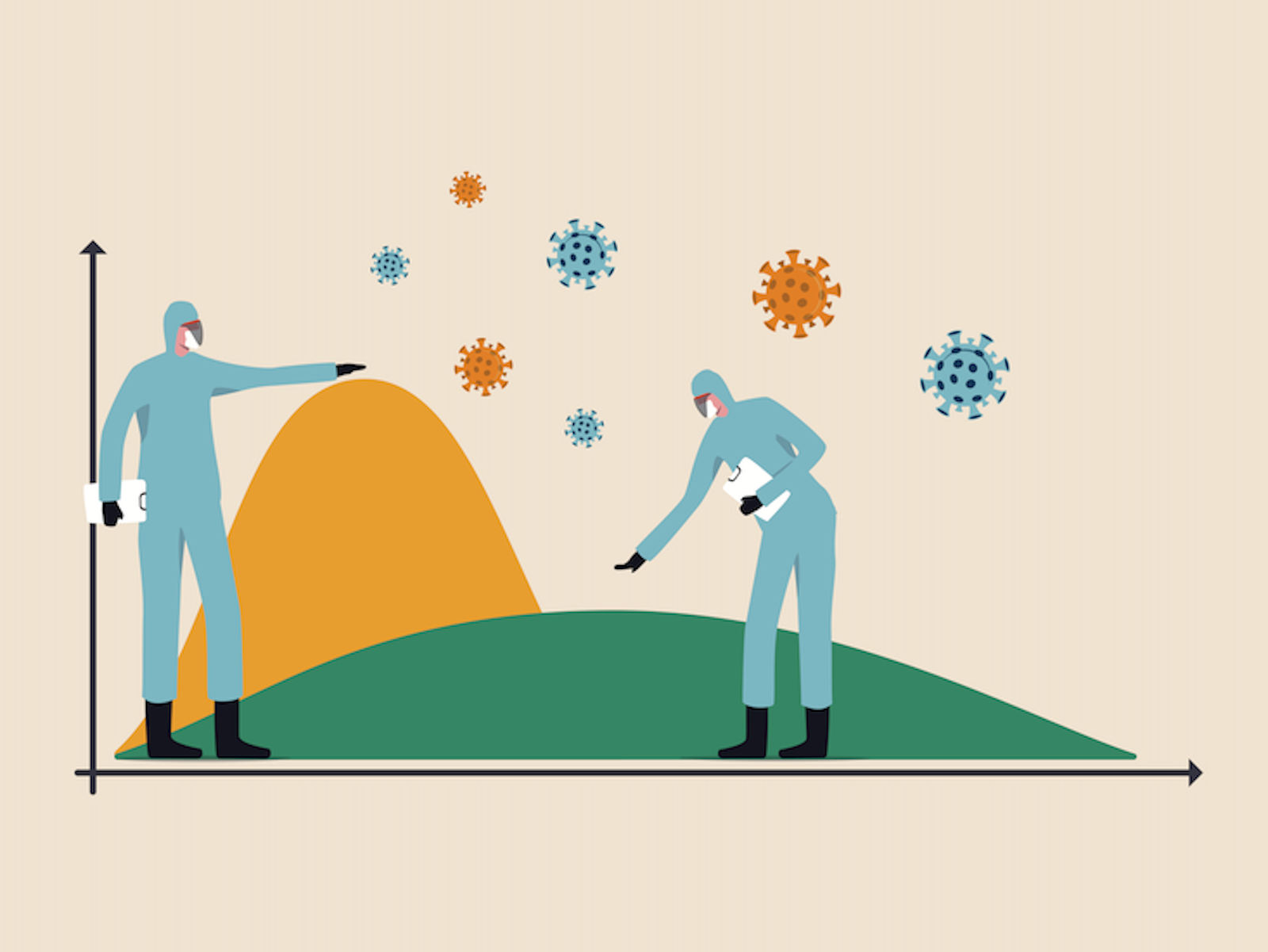
On April 15, 2020, 2,271 people in the United States will die from COVID-19. That day, the U.S. will be short 61,509 hospital beds, 33,440 slots in intensive care units, and 26,753 ventilators. By August, the death toll will have climbed to 81,114.
April 15 is not arbitrary. It is the date a new model forecasts the COVID-19 pandemic in the U.S. will peak, level off for a few days, and begin to decline. The model comes from The Institute for Health Metrics and Evaluation (IHME), supported by the Gates Foundation. It was developed at the request of the University of Washington School of Medicine, other U.S. hospital systems, and state governments working “to determine when COVID-19 would overwhelm their ability to care for patients,” according to a statement from the organization. Data fed into the model includes mortality rates from the World Health Organization and U.S. local and state governments; implementation of social distancing policies across the U.S.; reports from the American Hospital Association on licensed hospital bed and ICU capacity; and COVID-19-related demand for ICU services. The model is updated weekly with new information.
“Great, we can open restaurants and summer school in June or sooner.” That could be a disaster.
On March 24, President Trump said he wanted “to have the country opened up and raring to go by Easter.” Deborah Birx, coordinator for the White House Coronavirus Task Force, said she used the IHME model as part of the effort to persuade Trump to recommend social distancing continue until at least April 30.
How accurate is the model? Certainly, it is not perfect. “No one knows how many cases there are,” Abraham Flaxman, a member of the IHME team, told me. “Testing varies enormously throughout the country, from nonexistent in many places to widespread in a few. But we can count deaths and people in hospital beds.” Public health experts acknowledge the limitations of any model to depict reality, but say models like IHME’s are valuable. “Without serious models in this epidemic, how can anyone make sensible policies?” said Barry Bloom of the Harvard School of Public Health.
The IHME model sees COVID-19 rolling across the country in waves at different places and different times with peaks through April and into May. It forecasts New York will be the first to hit its peak on April 9 and will see 15,546 die by August. On the same day, New Jersey hits it peak with 2,096 deaths. Michigan and Louisiana follow on April 10 (2,862 and 1,987 deaths, respectively). California peaks on April 26 and sees 4,306 deaths. The model forecasts Florida having its peak on May 3 and a total death count of 6,766. The forecast deaths range from the highest in New York to 762 in Arkansas.
While the model’s mortality peaks are alarming, experts are equally concerned about its prediction of declining rates. The death rate and use of hospital beds from COVID-19 has yet to decline anywhere in the U.S. “We are making those forecasts based on the effects of social distancing and other mitigation efforts we saw in other countries—especially China,” explained Flaxman. “We are assuming it will happen here in much the same way.”
“That is exactly what scares me,” said Edward Kaplan, an epidemic modeler at Yale University. “Nowhere in this country are the restrictions as severe as they were in Wuhan. We have no idea what will happen if, for example, New York runs out of ventilators or if people are sent away from hospitals too soon and infect many others. People will look at this and say, ‘Great, we can open restaurants and summer school in June or sooner. That could be a disaster.”
The IHME model contrasts sharply with a model, based at Imperial College, London, widely publicized two weeks ago. The Imperial College model predicted the pandemic could kill “as many as” 2.2 million Americans. But that model predicted the high number without social distancing, voluntary quarantine, school closures, and other mitigation measures—factors included in the IHME model. Nevertheless, what concerns Bloom is that policymakers might latch onto to the lower IHME mortality rates and assume “things won’t be so bad.” The most recent report from the Imperial College estimates that COVID-19 could have killed 40 million people without the global response.
Even with the responses, the situation is bad now in many places. I only have to look at my own phone. People I know in emergency rooms and intensive care units in New York City hospitals have been messaging me warnings all week. “You cannot emphasize how terrifying it is working here now”; “Staff are getting sick all around us so fewer have to do more for longer hours”; “We don’t have enough personal protective equipment”; “These pitfalls are exposing countless people to the virus.”
At some point, the number of deaths and people in hospital beds will go down, probably because social distancing is working. Public health experts emphasize that will not mean we can stop staying at home, avoiding crowds, and practicing other containment measures. Quickly ending the mitigation without a well-thought-out plan could bring the virus roaring back. That happened in several places during the 1918 Spanish flu pandemic and other outbreaks. When the flare-ups occurred, many places were depleted and even less able to handle the consequences. “With the continued lack of leadership, mixed messaging, and confusion from the federal government, the end could be almost as damaging as the beginning,” Bloom said.
Robert Bazell is adjunct professor of Molecular, Cellular, and Developmental Biology at Yale. For 38 years, he was chief science correspondent for NBC News.






























